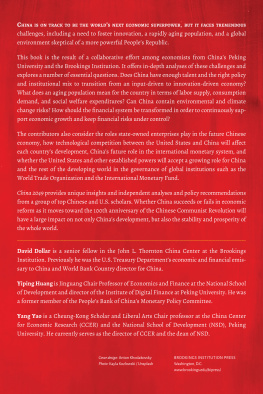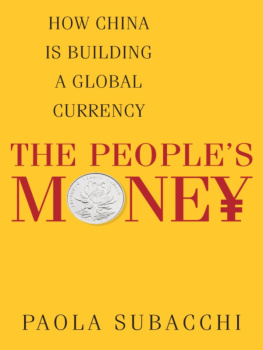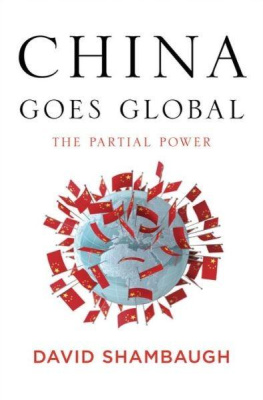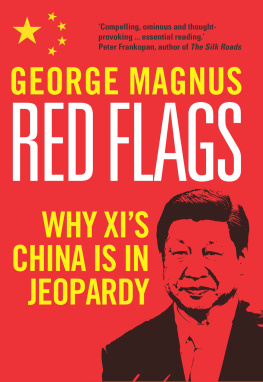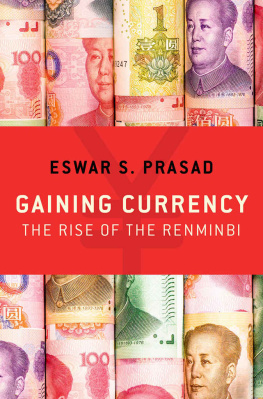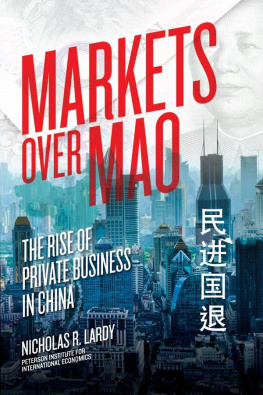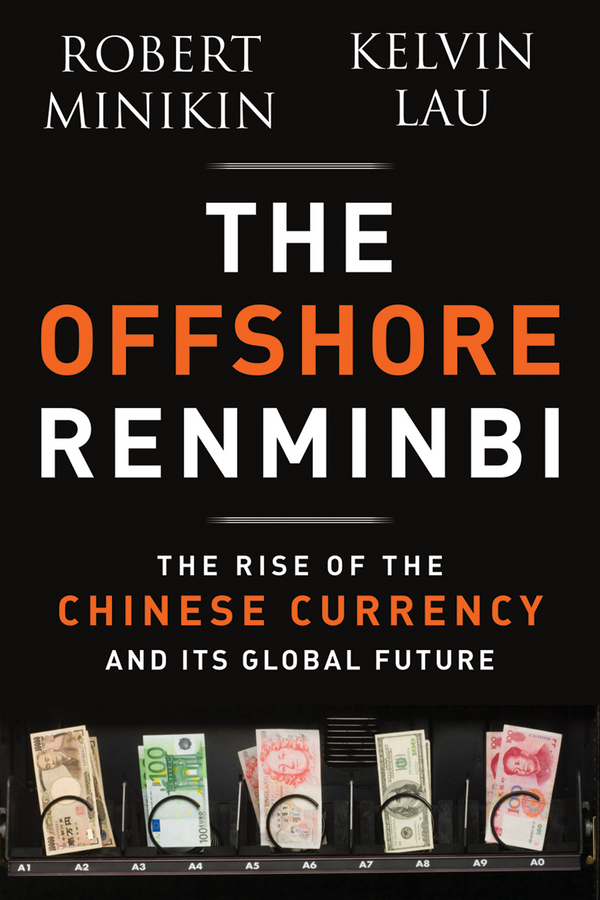Contents

Copyright 2013 by John Wiley & Sons Singapore Pte. Ltd.
Excerpts from Special ReportThe CNH FX, Rates and Dim Sum Bond Markets, first published 5 October, 2010; Special ReportThe Super-Cycle Report, first published 15 November 2010; Special ReportCNH Supports CNY Reserve-ification, first published 10 January 2011; The Renminbi InsiderGrowing Up, first published 15 February 2012; The Renminbi InsiderOn the Move, first published 3 May, 2012; Standard Chartered Bank (Hong Kong) Limited, 2010, 2011, 2012. Reprinted with permission.
Published by John Wiley & Sons Singapore Pte. Ltd.
1 Fusionopolis Walk, #07-01, Solaris South Tower, Singapore 138628
All rights reserved.
No part of this publication may be reproduced, stored in a retrieval system, or transmitted in any form or by any means, electronic, mechanical, photocopying, recording, scanning, or otherwise, except as expressly permitted by law, without either the prior written permission of the Publisher, or authorization through payment of the appropriate photocopy fee to the Copyright Clearance Center. Requests for permission should be addressed to the Publisher, John Wiley & Sons Singapore Pte. Ltd., 1 Fusionopolis Walk, #07-01, Solaris South Tower, Singapore 138628, tel: 6566438000, fax: 6566438008, e-mail: .
Limit of Liability/Disclaimer of Warranty: While the publisher and author have used their best efforts in preparing this book, they make no representations or warranties with respect to the accuracy or completeness of the contents of this book and specifically disclaim any implied warranties of merchantability or fitness for a particular purpose. No warranty may be created or extended by sales representatives or written sales materials. The advice and strategies contained herein may not be suitable for your situation. You should consult with a professional where appropriate. Neither the publisher nor the author shall be liable for any damages arising herefrom.
Other Wiley Editorial Offices
John Wiley & Sons, 111 River Street, Hoboken, NJ 07030, USA
John Wiley & Sons, The Atrium, Southern Gate, Chichester, West Sussex, P019 8SQ, United Kingdom
John Wiley & Sons (Canada) Ltd., 5353 Dundas Street West, Suite 400, Toronto, Ontario, M9B 6HB, Canada
John Wiley & Sons Australia Ltd., 42 McDougall Street, Milton, Queensland 4064, Australia
Wiley-VCH, Boschstrasse 12, D-69469 Weinheim, Germany
ISBN 978-1-118-33925-1 (Cloth)
ISBN 978-1-118-33926-8 (ePDF)
ISBN 978-1-118-33927-5 (Mobi)
ISBN 978-1-118-33928-2 (ePub)
Foreword
Talk about being in the right place at the right time. Right at the eye of a building storm; the epicenter of a currencys ascension. And to be a ripple maker.
Having been in the financial industry for over 25 years spanning different continents, watching from close range the renminbis internationalisation forayand Hong Kongs transformation into an offshore renminbi financial centrehas to be one of the most exciting watershed developments. My colleagues and I have had the privilege to be at the heart of all these actions, not only as witnesses but also as contributors, each playing an active role in facilitating and shaping the global ascent of the Chinese currency. It could be as small as ensuring that a customer gets the needed renminbi to settle a cross-border payment; educating a local exporter on the benefits of invoicing in the Chinese currency; or advising a multinational corporate on ways to raise Dim Sum funds and repatriating them into the mainland. It may also entail working with on- and offshore authorities on broadening and deepening the offshore renminbi market, designing and integrating settlement platforms, and developing new products.
The whole experience of helping the offshore renminbi market develop is both fascinating and humbling. It has been fascinating seeing how smoothly the renminbi, through successive policy liberalisations and its seamless fusion with offshore market forces, has gradually eased into its new but certainly more natural forma currency with a status that better matches Chinas growing economic importance. And then there is the eye-popping pace of growth in the various markets, be it the rise in renminbi trade settlement volume to more than 10 percent of total China trade in Q12012 or the CNY 190 billion worth of total issuance of Dim Sum bonds in Hong Kong in 2011.
One can also be easily humbled by the renminbis transformative power on the global business and market landscape. Longstanding market practices are being challengedfor example, multinational corporates are starting to move away from USD-invoicing, while more and more central banks around the world are beginning to allocate a small part of their reserve holdings to the renminbi. The redenomination of commodities into renminbi could well be the next big wave transforming the international trade and financial ecosystem. On a more local scale, Hong Kong is finding its monetary conditions increasingly influenced by onshore lending cycles, and its deposit base steadily shifting toward a greater mix of renminbi.
Reading this book on the rise of offshore renminbi authored by my colleagues Kelvin and Robert, one could get a strong sense that the powerful forces allowing renminbi internationalisation to flourish are converging. An assortment of economic, financial, and policy tailwinds are set to carry the renminbi to further places beyond Hong Kong, into the hands of corporate treasurers, sovereigns, institutional investors, and households. These forces, as they gather pace, will help the offshore renminbi market ride through any inevitable bumps uncovered along the way.
The timing of Beijing pursuing renminbi internationalisation, in particular, seems impeccable. With the world still reeling from the financial crisis in the West, the search is on for the next major currency that is international, influential, and dependable. The prevailing crisis is set to bring about structural changes that could be game-changing. For many, this presents a once-in-a-lifetime opportunity. Acting as a catalyst, the crisis has accelerated the shift of economic power from the West to the East, with the latter being led by China, placing it under the spotlight as an increasingly important growth engine of the world economy for years if not decades to come. To duly perform this role, China must transform to a more sustainable and domestic-oriented growth model. The continued orderly opening up of its capital account and the internationalisation of its currency are, in the eyes of Beijing, crucial parts to this grand scheme.
Hong Kong has been the right place for renminbi to gain an initial footing offshore. For decades, Hong Kong has been a conduit connecting the mainland with the rest of the worldvia trade, investment flows, and effective financial solutions. Not only is Hong Kong already equipped with a full package of financial hardware and software, but it is also designated by Beijing as the offshore renminbi center. It acts as both a testing ground and a firewall. Hong Kong has a unique role to playto support China as it liberalises its currency in an orderly but well-paced manner, and to help shape such development through free-market forces. Hong Kong, in turn, stands to benefit from the enormous opportunities brought about by the process.
I am very delighted that Robert and Kelvin have taken on this initiative to author a book dedicated to the offshore renminbi. They are among the best in town on this research area, and are certainly most qualified to write about this new chapter of global currency development. Their hands-on experience spanning both the early and rampant years of offshore market development, together with their complementary areas of expertise in macroeconomics, currency, and market-oriented dynamics, make this one of the most comprehensive and authoritative books you will find out there. And the ripples have just begun.



